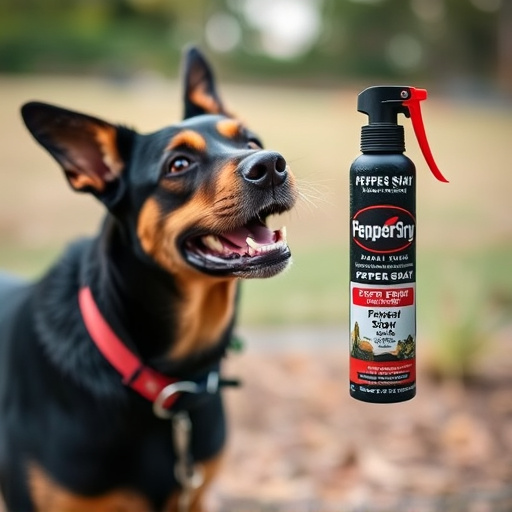Dog spray, with key ingredient capsaicin, is a tool for behavior management, requiring careful calibration of concentration for safety and effectiveness. Lower capsaicin levels (2% to 5%) in safe pepper sprays deter dogs without causing severe harm, making them ideal for modifying unwanted behaviors like aggression or barking. Reputable manufacturers provide detailed information on ingredients and application methods, ensuring the optimal safe pepper spray strength for dogs.
“Discover the power of dog spray as a safe and effective deterrent. This comprehensive guide explores the essential components of understanding and choosing the right pepper spray for your pet’s protection. From dissecting active ingredients and their safety profiles to evaluating deterrents’ efficacy, we empower you to make informed decisions. Learn how to select a suitable, non-lethal safe pepper spray with the right strength specifically tailored for dogs, ensuring peace of mind during outdoor adventures.”
- Understanding Dog Spray: Ingredients and Safety Profiles
- Evaluating Effective Deterrents: Active Components and Their Efficacy
- Choosing the Right Pepper Spray: Considerations for Pet Owners
Understanding Dog Spray: Ingredients and Safety Profiles
Dog spray, also known as pepper spray for dogs, is designed to be a safe and effective deterrent for managing canine behavior. When choosing a dog spray, it’s crucial to understand the ingredients and their safety profiles. Many dog sprays contain capsaicin, the same ingredient found in human pepper spray, which stimulates nerve endings, causing temporary discomfort and distraction. However, not all dog sprays are created equal; the key is finding one with the right balance of capsaicin strength for dogs while ensuring it’s safe for both pets and users.
The “safe pepper spray strength for dogs” refers to the concentration of capsaicin that will deter a dog without causing severe or lasting harm. Products that are too strong may lead to adverse reactions, especially in sensitive dogs. Conversely, weak solutions might not be effective as deterrents. Therefore, it’s essential to select dog sprays with carefully calibrated capsaicin levels tailored for canine safety and behavior modification.
Evaluating Effective Deterrents: Active Components and Their Efficacy
When evaluating dog spray as a deterrent, understanding its active components and effectiveness is paramount. These sprays typically contain capsaicin, the same compound that gives chili peppers their heat, or synthetic analogues like olivine. The strength of pepper spray for dogs is measured in capsaicin units (CU), with higher values indicating greater potency.
A safe yet effective dog spray should have a suitable balance—not too mild to be noticeable but not so strong as to cause severe discomfort or potential health issues. Studies show that a concentration between 2% and 5% capsaicin is often sufficient to deter dogs without causing prolonged distress. This range ensures the spray remains humane while being reliable in preventing unwanted behaviors, such as aggression or barking.
Choosing the Right Pepper Spray: Considerations for Pet Owners
When considering a safe and effective pepper spray deterrent for dogs, it’s crucial to understand that not all sprays are created equal. Pet owners should look for products specifically designed with canine safety in mind. These formulations often have lower capsaicin concentrations, aiming to deter aggression or unwanted behaviors without causing severe discomfort or long-term harm.
Choosing a safe pepper spray requires researching brands and formulas that offer controlled strength levels. Reputable manufacturers provide detailed information about their products’ ingredients, concentration, and application methods. Opting for a spray with a targeted range of 3-5 feet ensures its effectiveness while minimizing the risk of accidental exposure to other animals or humans in close proximity.
Dog spray, when used responsibly, can be an effective and safe deterrent to protect against aggressive canine encounters. Understanding the ingredients and safety profiles of these sprays is key. By evaluating active components and their efficacy, pet owners can make informed decisions when choosing a safe pepper spray designed specifically for dogs. When considering the right fit for your furry companion, look for products with appropriate strength levels tailored for canine sensitivity while ensuring they meet the needs of various situations.
